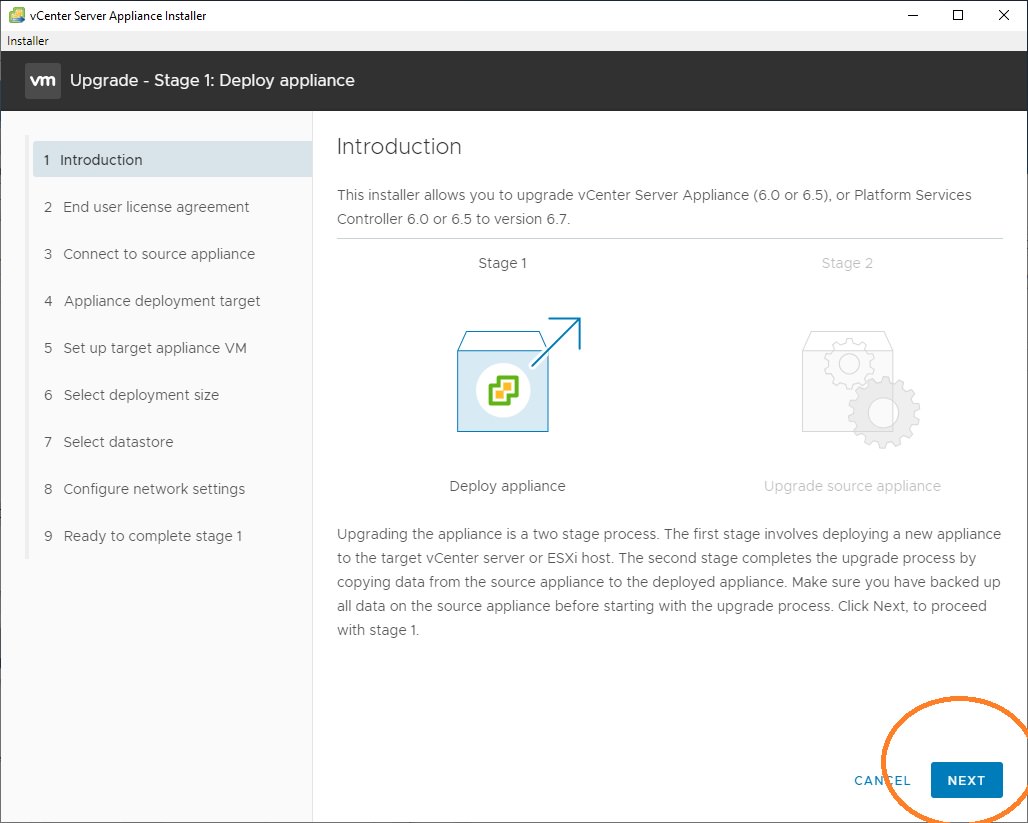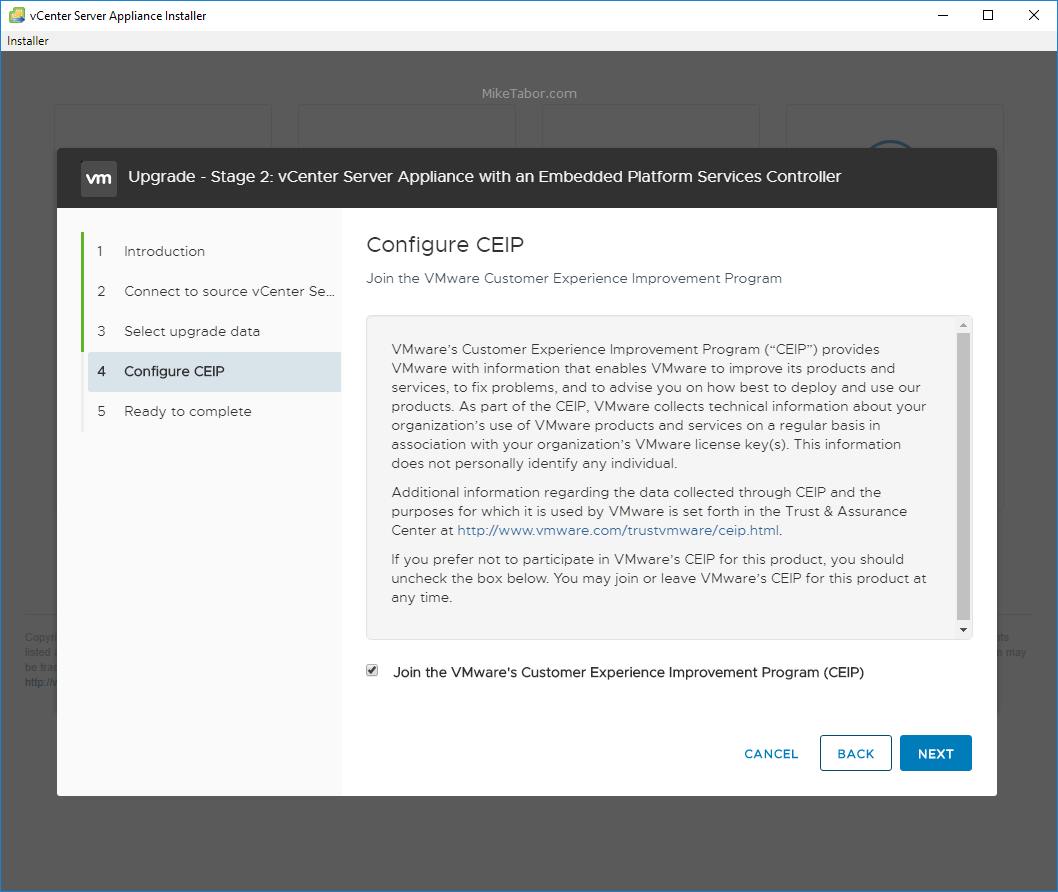
- #Upgrade vcenter 6.5 to 6.7 how to#
- #Upgrade vcenter 6.5 to 6.7 update#
- #Upgrade vcenter 6.5 to 6.7 Patch#
- #Upgrade vcenter 6.5 to 6.7 upgrade#
#Upgrade vcenter 6.5 to 6.7 update#
Next, we can download the update, and perform the update with: esxcli software profile update -d -p ESXi-6.7.0-20180804001-standard To do so: esxcli network firewall ruleset set -e true -r httpClient At this point you may need to open a ESXi firewall rule, in order to allow outbound internet connections, as using this method we are going to grab the update directly from VMware. Start by putting the ESXi host into maintenance mode, to ensure there are no running virtual machines. This is particularly useful when updating a standalone ESXi host which isn’t connected to a vCenter. Whilst Update Manager is commonly used to update ESXi hosts, you also have the option of performing the update using the command line.
#Upgrade vcenter 6.5 to 6.7 how to#
How to update ESXi 6.5 to 6.7 using the Command Line Overall I think VMware have done a great job at integrating Update Manager with vCenter, and with making it available through the HTML5 UI.
#Upgrade vcenter 6.5 to 6.7 upgrade#
The Updates page for the host should also now show the host to be compliant against it’s attached baselines, and will display the current release and build versions of the host:Īll done! Be sure to do any post upgrade checks at this point to ensure the host is working as expected. The process will take a little while, but once it finishes the host should now be running ESXi 6.7: You’ll first be prompted to accept the EULA, then will be asked for confirmation to proceed:Ĭlick OK to start the upgrade. To upgrade the host, select the baseline just attached, then click ‘Remediate’. Select the upgrade baseline created earlier:Īpplying the Upgrade Baseline to the ESXi host Click Attach, to select which baseline to attach to the ESXi host: To attach the baseline, select the host object then go to the Updates page.

vCenter will then handle putting the hosts in maintenance mode in turn, and vmotion the virtual machines to allow the hosts to be patched without incurring downtime to the VMs. It is possible however, to attach a baseline to a cluster (or datacenter!). In this example I’m just going to upgrade a single ESXi host, so will attach the new baseline directly to the host. The next step is to attach a Baseline to the ESXi host (or cluster) you would like to upgrade. We now have a baseline ready to apply to an ESXi host or cluster. On the next page, select the ESXi 6.7 image that was uploaded earlier, then click ok.

On the Baseline Definition page, enter a name and a description for the new baseline, then select the Upgrade baseline type. On the Baselines page, click new and then, New Baseline: The only thing that needs to be included in an upgrade baseline is the ESXi image just uploaded. In this case, we will be creating an upgrade baseline.
#Upgrade vcenter 6.5 to 6.7 Patch#
This often includes a list of patches that we wish to apply, which is known as a patch baseline. The baseline defines what level we want to patch/update ESXi to. With that done, we can now move on to creating an upgrade baseline. Once imported successfully, it should show up in the image list: On the vSphere Update Manager page, click ESXi images on the right, then click Import. The first thing we need to do is upload the ESXi 6.7 image. You should also read the upgrade guide and release notes for the version you are about to upgrade to. After logging in, you can find Update Manager on the main menu page:Īs always, before upgrading your ESXi hosts in a production environment, ensure that you check your hardware compatibility with the new ESXi version. To do this I’m going to stick to using the HTML5 client. Upgrade ESXi 6.5 to ESXi 6.7 Using Update Manager There are still several different ways to update an ESXi host, I’ll start by looking at using vSphere Update Manager.


I wrote a post recently about upgrading a VCSA to version 6.7 – this article will look at the next step, which is how to upgrade ESXi 6.5 to ESXi 6.7.


 0 kommentar(er)
0 kommentar(er)
